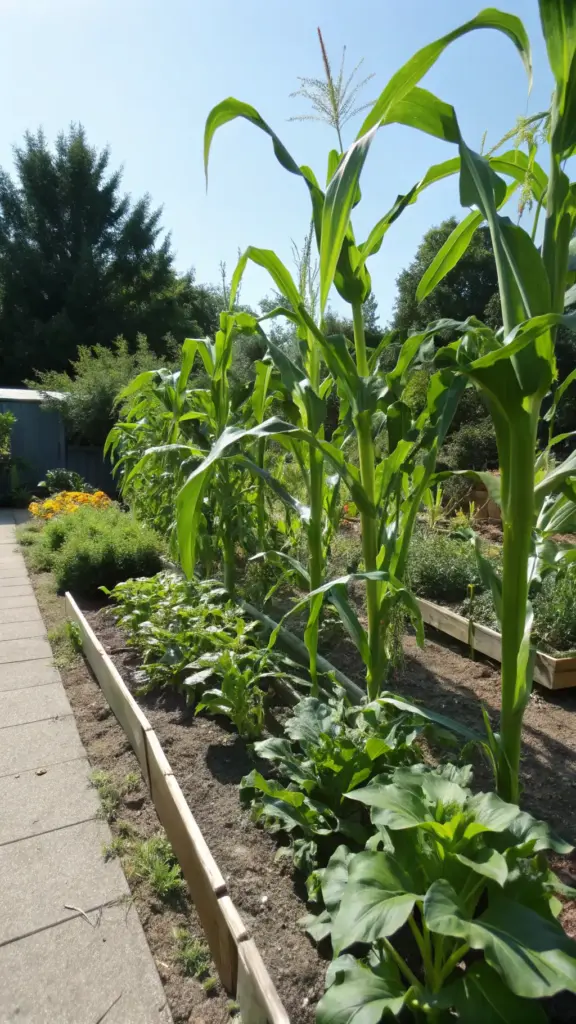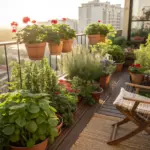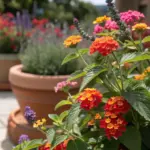5. Corn: The Tall, Stately Guardian of the Summer Squash Patch

Okay, so I’ll be honest—when I first planted corn in my garden, I did it mostly for the novelty. 🌽 I mean, who doesn’t love fresh summer corn on the cob? But what I didn’t expect was how much it would help my squash. It started with a happy accident when I tucked a few stalks into the back of my raised bed and noticed that the squash plants underneath stayed cooler and moister, even during those scorching July days.
How Corn Became My Garden’s Natural Sun Umbrella
Let me paint you a picture. It was mid-July, and the sun was relentless. My squash leaves were starting to curl at the edges like they were trying to hide from the heat. Then I looked over at the corn—tall, proud, and casting these beautiful long shadows across the garden.
That’s when it hit me: corn’s tall stalks provide natural shade during hot summer afternoons. No need for shade cloth or complicated structures—Mother Nature already gave us the perfect solution. I started planting a few rows behind my squash, and boom—problem solved. The leaves stayed lush, the soil stayed cool, and my plants didn’t get that crispy, sun-stressed look anymore.
The “Three Sisters” Method – Old Wisdom That Works
Here’s where things got really fun. A friend introduced me to the traditional Native American planting method known as the “Three Sisters”—corn, beans, and squash grown together in harmony. At first, I thought it sounded more like folklore than farming, but once I tried it?
Mind. Blown. 🤯
Corn acts as the support structure for climbing beans, beans fix nitrogen in the soil (which we now know is huge), and squash spreads out below, shading the roots and keeping weeds down. It’s not just smart gardening—it’s storytelling-style gardening. Every plant has a role, a purpose, and a reason to be there. If you’re into educational moments in the garden (especially with kids!), this trio is gold.
Why Corn Is More Than Just a Backdrop
Beyond function, let’s talk about form. Corn adds serious height and structure to garden aesthetics. Before I planted it, my beds felt flat and one-dimensional. Once those stalks shot up? Instant drama. It’s like adding a green curtain to your garden stage.
And bonus: corn helps reduce evaporation and keeps soil moist, especially when planted near thirsty squash vines. Less watering, less stress, and more productivity? Yes, please.
If you’re into garden layout ideas that blend history, sustainability, and visual appeal, corn deserves a spot in your plan. Trust me—you’ll feel like a gardening historian and a plant whisperer all at once.
👉 Ready to bring in some floral power? Click Next to meet borage—the bee-loving, flavor-boosting secret weapon in your squash garden!









GIPHY App Key not set. Please check settings